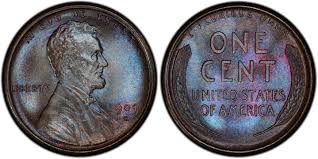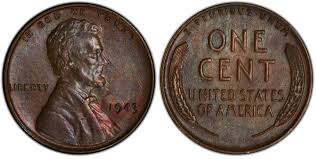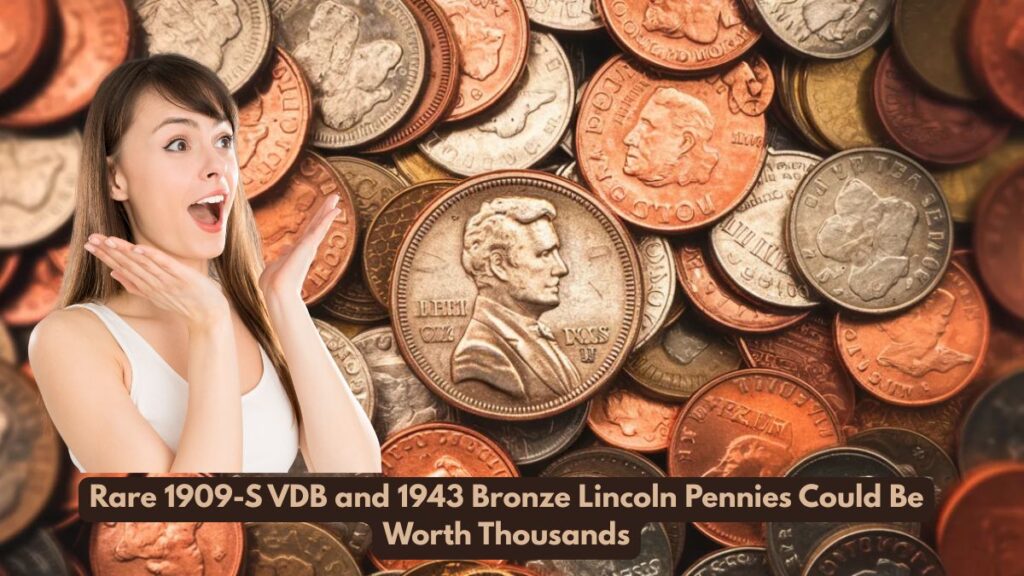While most people overlook the coins in their pockets or piggy banks, coin collectors know better—some of those pennies might be worth a small fortune.
Among these hidden treasures is the Lincoln Wheat Penny, specifically rare variants like the 1909-S VDB and 1943 Bronze Lincoln Cent, which have been known to sell for as much as $168,000 or more. Surprisingly, a few of these rare coins may still be circulating unknowingly.
Let’s explore how a seemingly ordinary penny could be one of the rarest coins in the United States and how you can identify it.
The 1909-S VDB Lincoln Wheat Penny: A Rare Collector’s Dream
The 1909-S VDB penny is one of the most iconic and coveted coins among U.S. collectors. It was minted at the San Francisco Mint, with only 484,000 coins ever made. The initials VDB refer to Victor David Brenner, the coin’s designer. His full initials were placed prominently on the reverse of the coin between the wheat stalks.
However, the public criticized the bold initials, prompting the U.S. Mint to remove them shortly after release, making these original coins extremely rare.

In mint condition, a 1909-S VDB penny has fetched upwards of $168,000 at auction. Even in slightly worn condition, these coins are still worth thousands.
How to spot it:
- Look for the “S” mint mark under the year on the obverse side.
- Check for “VDB” initials at the bottom center of the reverse between the wheat ears.
The 1943 Bronze Wheat Penny: A Wartime Minting Mistake Worth a Fortune
Another Lincoln Wheat Penny that has stunned collectors is the 1943 Bronze Penny, also known as the Copper Penny. During World War II, copper was vital to the war effort, so the U.S. Mint produced pennies from zinc-coated steel instead.
However, a few bronze planchets from 1942 were mistakenly used, resulting in a rare batch of copper pennies in 1943. Only 30 to 40 of these coins are known to exist.

In 2021, one such coin was sold at auction for $336,000, making it one of the most valuable pennies ever produced.
How to spot it:
- If you find a 1943 penny that doesn’t stick to a magnet, you might have a bronze version.
- Steel versions are magnetic; copper/bronze are not.
Could These Pennies Still Be in Circulation?
Though incredibly rare, it’s not impossible for these valuable coins to still be in circulation or in old coin jars and collections. Most people wouldn’t think twice about a penny, especially older ones that have passed from hand to hand for decades.
According to the U.S. Mint, nearly 27 billion Lincoln Wheat Pennies were produced from 1909 to 1958, making it plausible that a few rare pieces could still be out there.
Visit the U.S. Mint official website for more information on coin design history and rare coin verification.
What To Do If You Think You’ve Found One
If you suspect that you’ve found a rare Lincoln Wheat Penny:
- Do Not Clean the Coin – Cleaning can reduce its value.
- Use a Magnet – Particularly for 1943 pennies.
- Check the Mint Marks and Initials – Use a magnifying glass if needed.
- Seek Professional Grading – Contact a trusted grading service like PCGS or NGC.
- Consult a Reputable Dealer – Always cross-check offers and valuations.
Conclusion
The idea that a coin in your pocket could be worth over $168,000 might sound like a fantasy, but for Lincoln Wheat Penny collectors, it’s a very real possibility. With just a bit of attention to detail and some historical knowledge, you could stumble upon a hidden gem among your spare change.
So next time you receive a penny, take a second look—you just might be holding a piece of history worth a fortune.
This article has been carefully fact-checked by our editorial team to ensure accuracy and eliminate any misleading information. We are committed to maintaining the highest standards of integrity in our content.

Himanshu Sharma writes for Weekend Spy, focusing on recruitment, government schemes, and current affairs. He is dedicated to making complex information accessible to readers.
Himanshu enjoys playing chess, hiking, and trying new recipes, always seeking ways to combine his love for writing with his passion for exploration. Connect with Drop him an email at [email protected].







